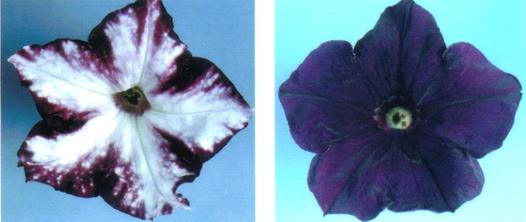The word "phenotype" is of Greek origin and is translated (literally) "I find", "I show." What is the practical significance of this concept?
What is a phenotype? Definition
Under the phenotype should be understood a set of characteristics that are inherent in the individual at a particular stage of development. This population is formed on the basis of the genotype. The manifestation of dominant genes is characteristic of diploid organisms . More precisely, determining what a phenotype is, it follows that we talk about a combination of internal and external signs of an organism that were acquired in the process of individual development (ontogenesis).
General information
Despite a fairly accurate definition of what a phenotype is, its concept has a number of uncertainties. Most of the structures and molecules that are encoded by genetic material are not found in the appearance of the body. Moreover, they are part of the phenotype. An example is the phenotype of human blood. In this regard, according to some authors, the definition should include those characteristics that can be obtained using diagnostic, medical or technical procedures. A more radical further expansion may contain acquired behavior, and, if necessary, the influence of the organism on the environment and other organisms. So, for example, the incisors and beaver dam can be mistaken for their phenotype.
Main characteristics
Determining what a phenotype is, we can talk about some “removal” of genetic information towards environmental factors. At a first approximation, two characteristics should be considered:
- Dimension phenotype. This feature indicates the number of "removal" directions, which characterizes the number of environmental factors.
- The second sign indicates the level of phenotype sensitivity to environmental conditions. This degree is called - range.
Together, these characteristics indicate the richness and variety of the phenotype. The more multidimensional the totality of individual characteristics, the more sensitive the characters and the further they are from the genotype, the richer it is. So, for example, if we compare the phenotype of bacteria, roundworms, frogs, humans, then the "wealth" in this chain increases. This means that the human phenotype is richer.
History reference
In 1909, Wilhelm Johansen (Danish scientist) for the first time - in combination with the concept of genotype - proposed the definition of phenotype. This made it possible to distinguish heredity from the result of its implementation. The idea of differences can be traced in the work of Mendel and Weisman. Moreover, the latter distinguished somatic and reproductive cells in multicellular organisms. The chromosome set received from parents is contained in the cell nuclei. Chromosomes carry a complex of genes characteristic of a particular species in general and a specific organism in particular. The genes contain information about proteins that can be synthesized, as well as about the mechanisms that, in fact, determine and regulate synthesis. What, then, happens? During ontogenesis, genes are sequentially turned on and those proteins that are encoded by them are synthesized. As a result, the formation and development of all the properties and signs of the organism that make up its phenotype occurs. In other words, it turns out a kind of “product” from the implementation of the genetic program contained in the genotype.

The influence of external conditions on the development of individual characteristics
It should be noted that the genotype is not an unambiguous factor determining the phenotype. To one degree or another, the formation of a set of individual characteristics will also depend on the environment of stay, that is, on external factors. Under different conditions, phenotypes have a sharp difference. So, for example, the species of butterflies "Arashniya" in a year gives two offspring. Those individuals that emerged from overwintered pupae (spring) differ sharply from those that appeared in the summer. The phenotype of the plant may also be different. For example, in open space, pine trees are spreading, and in the forest - slender and tall. In the buttercup, the shape of the leaf depends on whether it is in the air or in the water.
The relationship of phenotypes and genotypes
The ability to change, which is provided for by the genetic program, is called the rate of reaction. As a rule, the more diverse the conditions in which the species lives, the wider this norm. In the case when the environment is sharply different from the one to which the species is adapted, there is a violation in the development of organisms, and they die. Recessive alleles are not always reflected in the phenotype. But at the same time they are preserved and can go to the offspring. This information allows you to better understand the evolutionary process. Only phenotypes participate in natural selection , but the genotypes are passed on to offspring and remain further in the population. The interaction is not limited to the relationship of recessive and dominant alleles - many genes interact with each other.